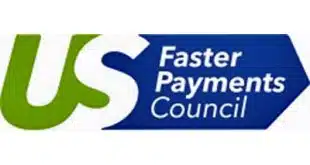The nation’s largest transit operators are moving toward so-called open-fare payment systems that will enable riders to pay fares with just a tap of a contactless bank card at a subway turnstile or a terminal on a bus. Replacement of old fare systems, however, is not going at nearly the speeds with which officials like their trains and buses to run.
Many transit executives say payment systems based on proprietary smart cards and magnetic-stripe fare cards that became popular in the early to mid-1990s are nearing the end of their useful lives. Thus the high interest in open-fare payments that would transfer card issuance and management from agencies to banks and processors, theoretically saving the agencies money and adding to rider convenience.
The Utah Transit Authority in the Salt Lake City area currently is the only U.S. agency accepting contactless cards systemwide. But the Chicago Transit Authority (CTA) in November awarded a $454 million open-fare contract to Cubic Transportation Systems that will include general-purpose prepaid cards and the possibility of accommodating mobile payments. That same month, the Philadelphia area’s Southeastern Pennsylvania Transportation Authority (SEPTA) awarded a $129.5 million contact to Xerox Corp.’s ACS Transport Solutions Group to replace its tokens, paper tickets, and magnetic-stripe passes with contactless payment devices.
The Washington Metropolitan Area Transit Authority and the Dallas Area Rapid Transit also have active procurements associated with building new fare systems that accept open bank card payments, according to the Smart Card Alliance (SCA) trade group. Yet the Big Daddy of U.S. public transit, the New York City area’s Metropolitan Transportation Authority, is behind Chicago and Philadelphia despite having tested contactless cards beginning about five years ago, tests that at one time or another included partners such as Citigroup Inc. and MasterCard Inc.
An MTA official said at the recent SCA 2012 Payments Summit in Salt Lake, however, that the authority is getting ready to embark on a two-part procurement process that will lead to the rollout of a contactless fare system. Such payments represent “a huge opportunity” for the MTA, Amy Linden, MTA senior director of New Fare Payment Systems, said at a press conference Feb. 8. “It’s all about consumers’ time.”
The first phase will consist of initial design and related work, for which Linden said the MTA might issue a request for proposals (RFP) this year. The second part will result in a procurement for final design and construction. The time span between design and a live date for the new system would be about three years. Old fare media would be phased out over 18 months, Linden said at a conference session. The second procurement will include forging commercial relationships with partner card issuers, acquirers, and networks. To speed the process, Linden said the MTA plans to use as much off-the-shelf hardware and software as possible.
The recent CTA and SEPTA contracts also were the result of years of study. Fare-system improvements in public transit take so long in part because of the scale and complexity of adding modern card-reading equipment to subway stations and buses without slowing passengers down. Transit managers also have to accommodate the large number of riders who still prefer cash while at the same time dealing with tight budgets. And with open-fare systems calling for agencies to work closely with a lead contractor and numerous subcontractors or other partners, including banks and payment processors, a host of new concerns arise for transit managers. They include everything from who holds the bag for fraudulent card transactions to fees on agencies’ new contactless prepaid cards to who owns the fare-reading equipment. “The MTA plans to maintain design authority and basically own the system,” said Linden.
Another transit system approaching a decision about open fares is the Port Authority Transit Corp. (PATCO), which operates a rail line between downtown Philadelphia and Camden, N.J. and the nearby suburbs. Consultant Alfonso Tumini, a former Cubic executive and speaker at the SCA conference, said PATCO is testing a Visa-branded reloadable prepaid card, about 3,000 of which are in issue but getting active use from only about 200 people. The test is moving into a six-month second phase, after which PATCO’s governing board will face a decision about what it wants to do next, Tumini tells Digital Transactions News.
A nearby transit operator, New Jersey Transit, is accepting Google Inc.’s Google Wallet, which uses near-field communication (NFC) technology in smart phones for mobile payments.





